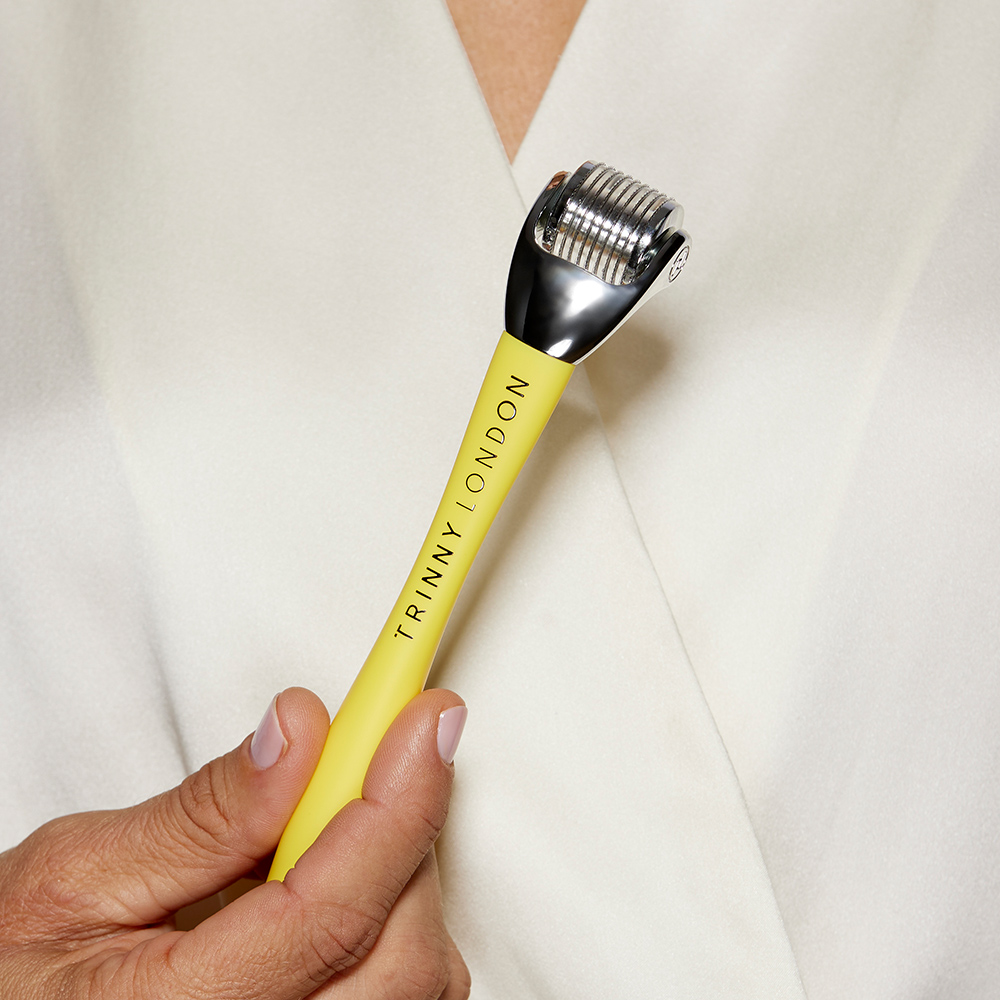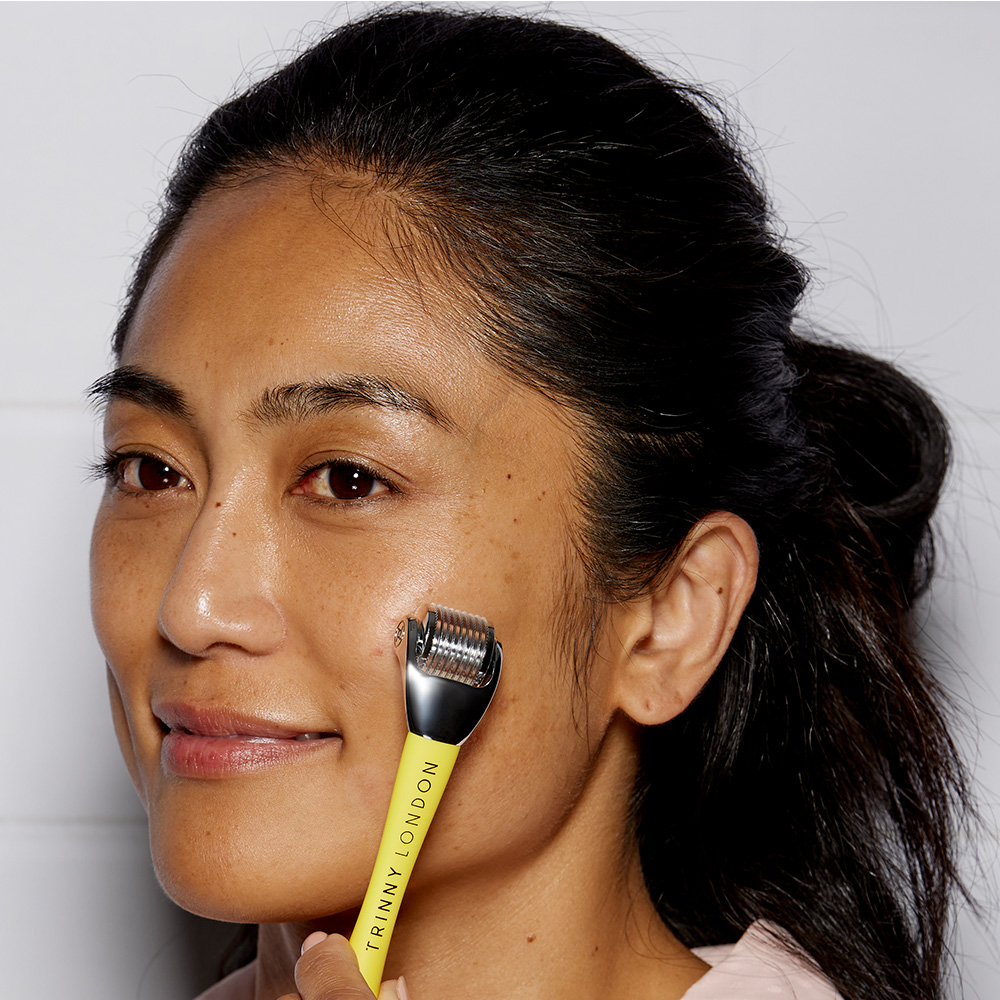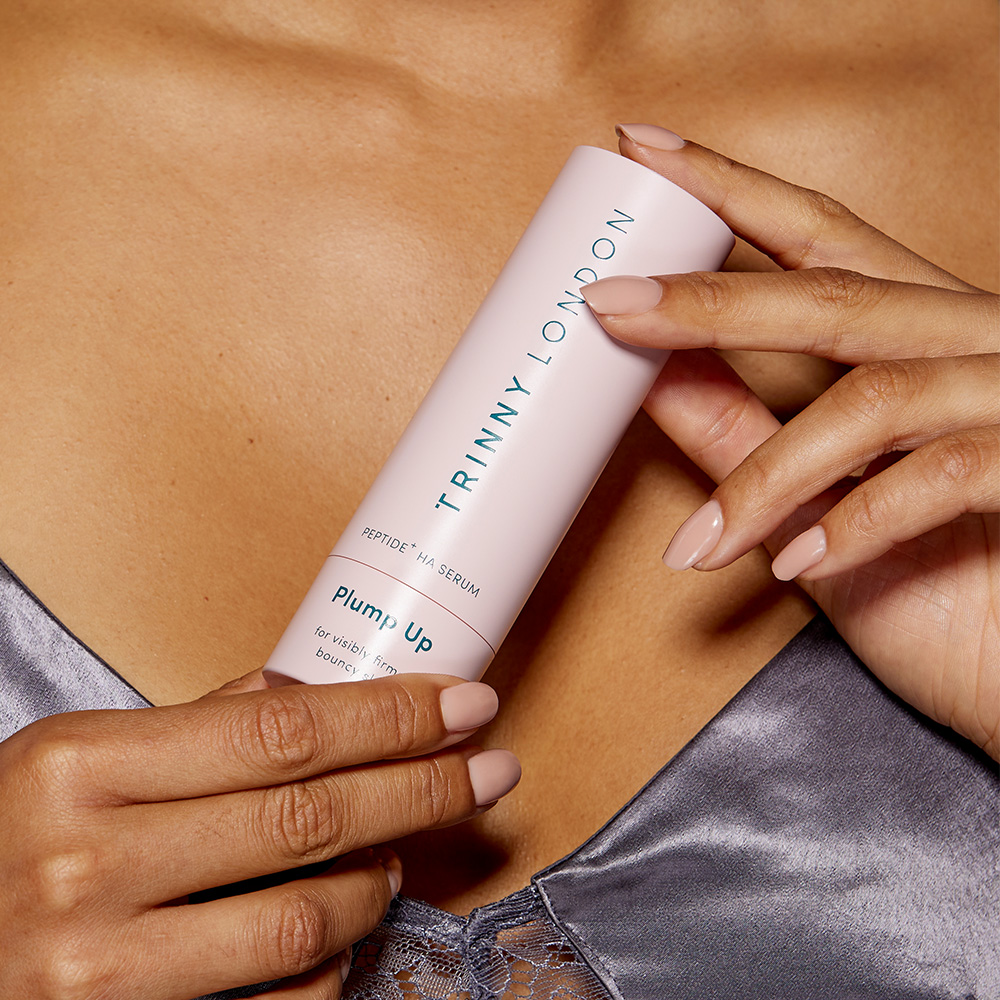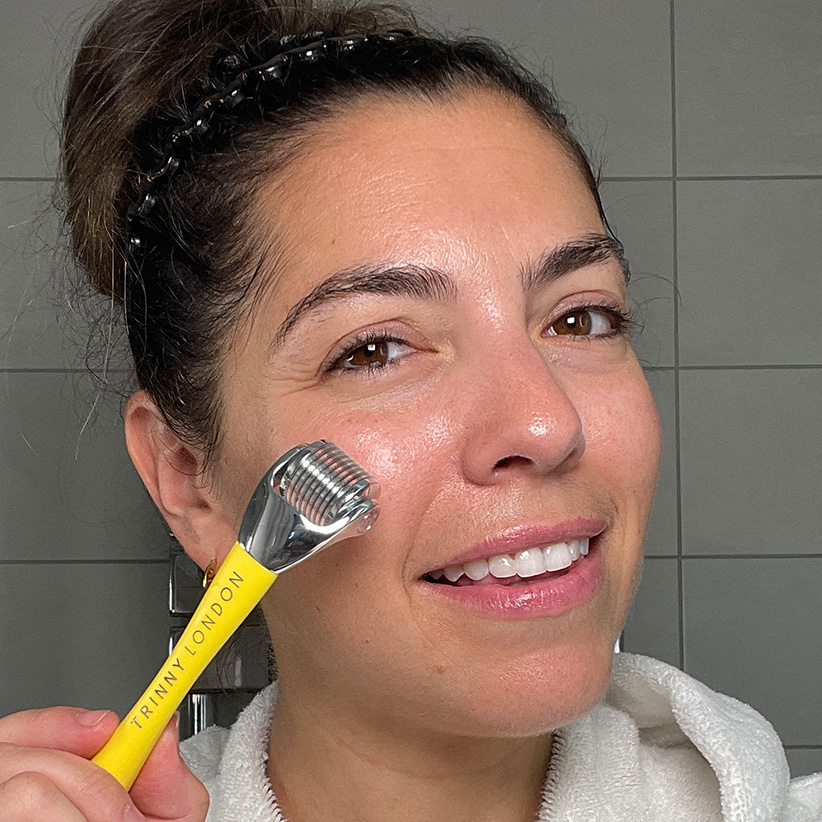

Alice Hart-Davis is a journalist and beauty expert who has been writing about tweakments and skincare for over 20 years – but what does she think of microneedling?
“I don’t currently microneedle at home, largely because I have a lot of procedures on my face,” explains Alice. “I’m often swapping from one skincare product to another, so I need to know the kind of skincare that I would use with a microneedle is really something I want going more deeply into my skin, and not all skincare is”. Luckily for Alice, Trinny is here to help.
What is microneedling?
Microneedling involves using a roller wheel dotted with tiny needles (fear not, we’re talking less than a millimetre) to create imperceptible microchannels on the skin’s surface – think pinpricks rather than punctures. This process works to rejuvenate your skin by boosting collagen production. “Short term, these microchannels aid and enhance the absorption and benefits of your skincare. Long term, microneedling improves skin texture, fine lines and wrinkles,” explains skin expert Fiona Brackenbury.
How does microneedling work?
Your skin is constantly in defence mode trying to repair itself, especially when you go to sleep – and microneedling simply makes the most of your skin’s talents. “Microneedling creates a microchannel, we’re not going deep, we’re not drawing blood. This encourages the skin to respond and react, but you’re not injuring the skin,” says Fiona. Instead, these microchannels trigger your body’s natural healing process, sending a signal to your skin to produce more collagen and quickly seal up these tiny pinpricks. The results? A smoother, plumper, firmer complexion.
How do you microneedle at home?
Just like any good evening skincare routine, you should always start prepping your skin by double cleansing. “You want immaculately clean skin,” says Fiona. “With no SPF, dirt or makeup lingering behind.” Gently pat your face dry and make sure you haven’t used any retinoids or exfoliants at least 24 hours before microneedling, as they tend to make your skin a little more sensitive.
Once your skin is sparkling clean, make sure your microneedle is too – just rinse it with hot water and shake off any excess. Then you’re ready to roll. Grab your microneedle and move it gently up and down, backwards and forwards, in small sections across your face. “You need to let the microneedle do its work and not press too hard. Be respectful to your skin and always listen to what it’s telling you – if you feel any tingling or sensitivity, then it’s not the day for microneedling” explains Fiona. Avoid delicate areas where the skin is thinner, such as around the eyes and across the lips, and take more care on bony areas with less cushion, such as the forehead and nose.
Although it might be tempting to microneedle every day to reap the rewards, we’d recommend you only use your tool two to three times a week to allow full recovery between sessions. We’d also suggest taking at least a one month break after every eight weeks of microneedling to give your skin the opportunity to rest and regenerate.
How do you care for your skin after microneedling?
After a microneedling session, it’s important to be kind to your skin and load up on skin-loving ingredients like hyaluronic acid. “Hyaluronic acid is your skin’s support system and gives that bounce and plumpness – hydration really is the foundation of youth,” says Fiona. Peptides also play nicely with microneedling. “Peptides aren’t irritating. They’re a real performance ingredient and give you that gorgeous, plump, healthy-looking complexion.” For all of the powerful benefits of hyaluronic acid and peptides in one skin-loving serum, we’d recommend Plump Up, our advanced peptide and hyaluronic acid serum.
And what should you avoid after microneedling? Anything that can irritate your skin – such as exfoliating acids, retinals and vitamin C. We’d suggest waiting 24-48 hours after microneedling before using any products that include these ingredients. We’d also recommend avoiding high heat, sweating and waxing before and after microneedling.
Read, watch and be inspired...



